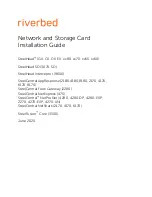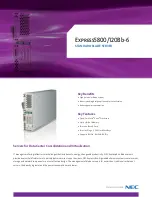
The following restrictions should be followed to ensure correct board operation.
•
The host loses contact with the monitor while the user program is running if the
user program disables the UART interrupt or changes the UART interrupt
vector.
•
The host loses contact with the monitor while the program is running and in an
ISR when nesting is turned off.
•
The host loses contact with the monitor while the program is running and in the
timer ISR, provided the highest priority timer vector is used.
•
The host cannot halt with the debugger’s Debug, Halt command if global IRQ
enable is disabled (IRPTEN bit), however, breakpoints will work.
Command processing, initiated from either the UART ISR or the Halt Loop, is done in the
command processing kernel. This kernel parses the commands and executes the
instructions. If the instruction requires data to be sent back to the host, the kernel initiates
the response.
3.2.3.1 Break Points
The ability to stop the execution of code and examine processor registers and memory
is extremely helpful when debugging code. Note that the debugger automatically
inserts breakpoints an the function Main(), when the
Settings -> Run To Main
command is checked, and at the _exit instruction.
3.2.4 AD1819 Transmissions
After reset, the AD1819 generates the clock used to transfer data across SPORT1. The
ADSP-21065L initiates all transmissions with the AD1819 by sending a synchronization
pulse. Even though the AD1819 transmits the data clock, it may not be ready for normal
operation. Until the AD1819 is ready, it holds the first bit (AD1819 Ready bit) of SLOT 0
low. When ready, this bit is driven high.
The first transmission to the AD1819 is done differently than subsequent transmissions.
The packets initially expected by the AD1819 do not have a consistent size. This first
transmission instructs the AD1819 to standardize the packet size to 16-bit. This command
is created by shifting and stuffing bits in the transmit buffer.
Slot 0 in each transmission specifies which slots contain valid data. The ADSP-21065L
uses DMA transfers to automatically send and receive data from the AD1819.
When the transmit DMA empties the transmit buffer, an interrupt occurs. If Tx Request >
0, the interrupt loads the data from the User Tx buffer into the Tx buffer. If the variable Tx
Request < 0 the Tx buffer is loaded with 0s. After the Tx buffer is loaded, the DMA is
initialized to transmit the new data in the Tx buffer.
The receive portion of the AD1819 interface is designed in a similar way. The DMA for
SPORT1’s receive register is configured to load the Rx buffer.
23
www.BDTIC.com/ADI
















































